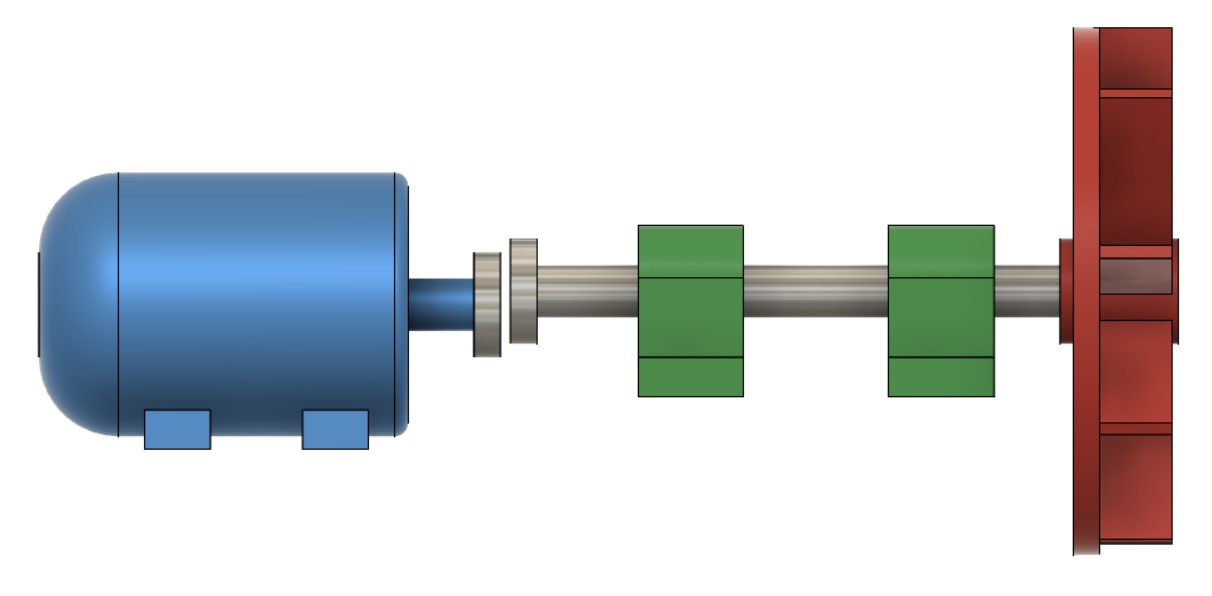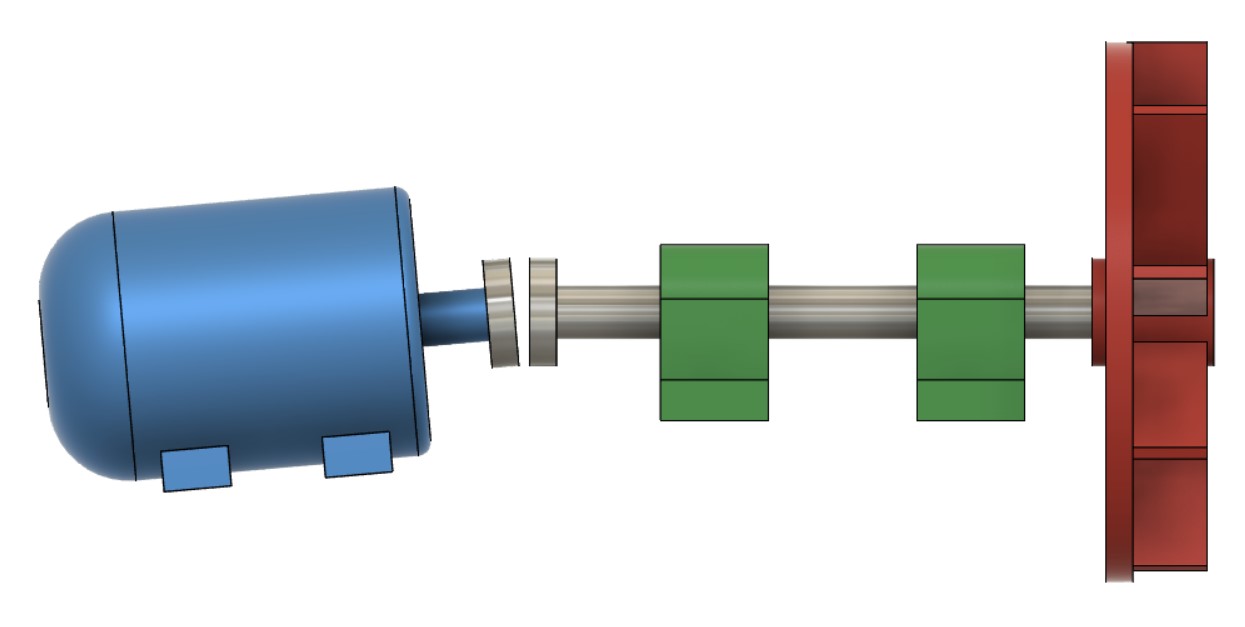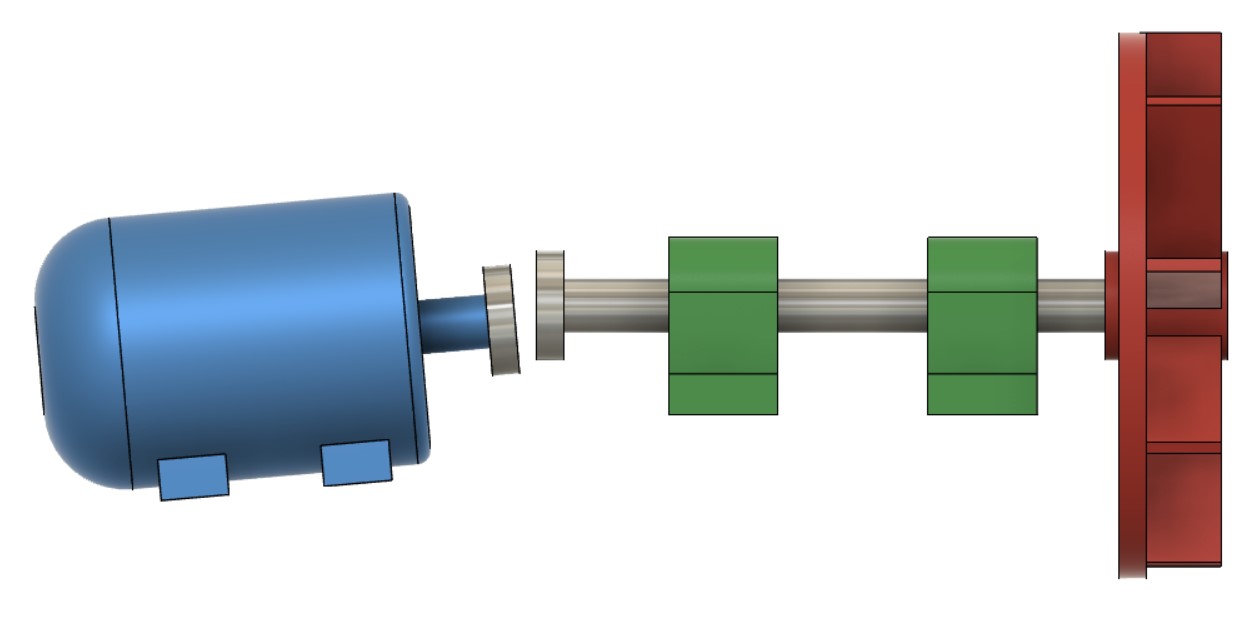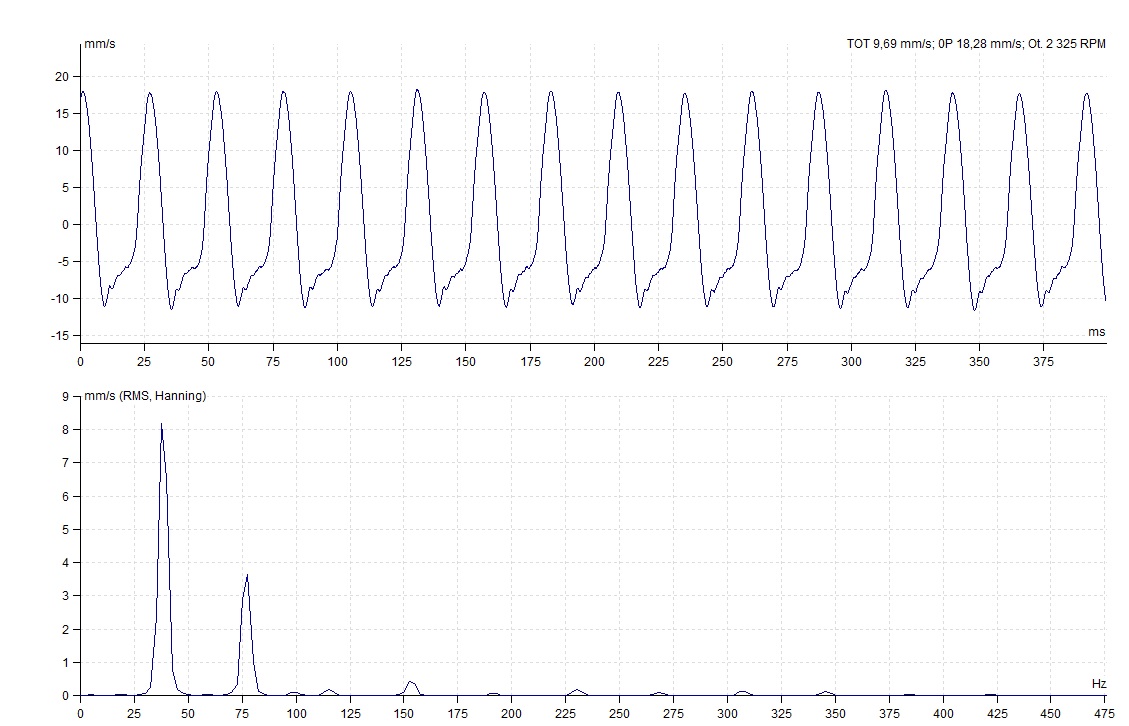Misalignment
Misalignment, similar to unbalance, is a primary cause of machine vibrations. Some machines are equipped with self-aligning bearings and flexible couplings, which can tolerate relatively large misalignment. However, we often encounter high vibrations due to misalignment. Essentially, there are two types of misalignment:
1. Parallel misalignment: The central axis of the shaft in both machines is mutually parallel but with an offset.
2. Angular misalignment: The central axis of the shaft in two shafts intersects at an angle.
3.Combination of parallel and angular misalignment.
Parallel misalignment.
Parallel misalignment results in two impacts per revolution, leading to dominant 2X vibrations in the radial direction. It exhibits high radial vibrations with a phase difference close to 180° across the coupling in the radial direction. Therefore, we will observe peaks at 1X and 2X frequencies. The design of the coupling often significantly influences the spectrum shape, especially when misalignment is significant.

Angular misalignment
Angular misalignment primarily exposes the drive shaft and the shaft of the driven machine to axial vibrations at 1X, 2X, and 3X, in addition to a 180° phase shift across the coupling in the axial direction.

Angular and parallel misalignment

Real example, time, and spectrum of an misaligned coupling:
